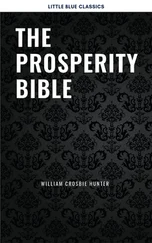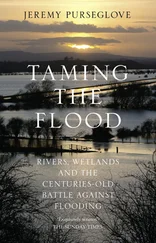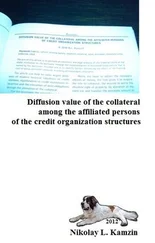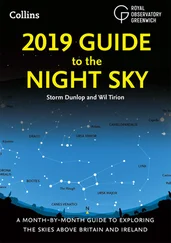Fodor, J. D. 2002a. Prosodic disambiguation in silent reading. Paper presented at the North East Linguistic Society.
Fodor, J. D. 2002b. Psycholinguistics cannot escape prosody. https://gc.cuny .edu/CUNY_GC/media/CUNY-Graduate-Center/PDF/Programs/Linguis tics/Psycholinguistics-Cannot-Escape-Prosody.pdf.
Foertsch, J., & Gernsbacher, M. A. 1997. In search of gender neutrality: Is singular they a cognitively efficient substitute for generic he ? Psychological Science, 8 , 106–111.
Fowler, H. W. 1965. Fowler’s Modern English Usage (2nd ed.; E. Gowers, ed.). New York: Oxford University Press.
Freedman, A. 2007. The party of the first part: The curious world of legalese . New York: Henry Holt.
Garrod, S., & Sanford, A. 1977. Interpreting anaphoric relations: The integration of semantic information while reading. Journal of Verbal Learning and Verbal Behavior, 16, 77–90.
Garvey, M. 2009. Stylized: A slightly obsessive history of Strunk and White’s “The Elements of Style.” New York: Simon & Schuster.
Gibson, E. 1998. Linguistic complexity: Locality of syntactic dependencies. Cognition, 68 , 1–76.
Gilbert, D. T. 1991. How mental systems believe. American Psychologist, 46 , 107–119.
Goldstein, R. N. 2006. Betraying Spinoza: The renegade Jew who gave us modernity . New York: Nextbook/Schocken.
Gordon, P. C., & Hendrick, R. 1998. The representation and processing of coreference in discourse. Cognitive Science, 22 , 389–424.
Gordon, P. C., & Lowder, M. W. 2012. Complex sentence processing: A review of theoretical perspectives on the comprehension of relative clauses. Language and Linguistics Compass, 6/7 , 403–415.
Grice, H. P. 1975. Logic and conversation. In P. Cole & J. L. Morgan (eds.), Syntax & semantics (Vol. 3, Speech acts ). New York: Academic Press.
Grosz, B. J., Joshi, A. K., & Weinstein, S. 1995. Centering: A framework for modeling the local coherence of discourse. Computational Linguistics, 21 , 203–225.
Haidt, J. 2012. The righteous mind: Why good people are divided by politics and religion . New York: Pantheon.
Haussaman, B. 1993. Revising the rules: Traditional grammar and modern linguistics . Dubuque, Iowa: Kendall/Hunt.
Hayes, J. R., & Bajzek, D. 2008. Understanding and reducing the knowledge effect: Implications for writers. Written Communication, 25 , 104–118.
Herring, S. C. 2007. Questioning the generational divide: Technological exoticism and adult construction of online youth identity. In D. Buckingham (ed.), Youth, identity, and digital media . Cambridge, Mass.: MIT Press.
Hinds, P. J. 1999. The curse of expertise: The effects of expertise and debiasing methods on predictions of novel performance. Journal of Experimental Psychology: Applied, 5, 205–221.
Hitchings, H. 2011. The language wars: A history of proper English . London: John Murray.
Hobbs, J. R. 1979. Coherence and coreference. Cognitive Science, 3 , 67–90.
Horn, L. R. 2001. A natural history of negation . Stanford, Calif.: Center for the Study of Language and Information.
Huddleston, R., & Pullum, G. K. 2002. The Cambridge Grammar of the English Language . New York: Cambridge University Press.
Huddleston, R., & Pullum, G. K. 2005. A Student’s Introduction to English Grammar . New York: Cambridge University Press.
Hume, D. 1748/1999. An enquiry concerning human understanding . New York: Oxford University Press.
Kahneman, D., Slovic, P., & Tversky, A. 1982. Judgment under uncertainty: Heuristics and biases. New York: Cambridge University Press.
Kamalski, J., Sanders, T., & Lentz, L. 2008. Coherence marking, prior knowledge, and comprehension of informative and persuasive texts: Sorting things out. Discourse Processes, 45, 323–345.
Keegan, J. 1993. A history of warfare . New York: Vintage.
Kehler, A. 2002. Coherence, reference, and the theory of grammar . Stanford, Calif.: Center for the Study of Language and Information.
Kelley, C. M., & Jacoby, L. L. 1996. Adult egocentrism: Subjective experience versus analytic bases for judgment. Journal of Memory and Language, 35, 157–175.
Keysar, B. 1994. The illusory transparency of intention: Linguistic perspective taking in text. Cognitive Psychology, 26 , 165–208.
Keysar, B., Shen, Y., Glucksberg, S., & Horton, W. S. 2000. Conventional language: How metaphorical is it? Journal of Memory and Language, 43, 576–593.
Kosslyn, S. M., Thompson, W. L., & Ganis, G. 2006. The case for mental imagery . New York: Oxford University Press.
Lanham, R. 2007. Style: An anti-textbook. Philadelphia: Paul Dry.
Lederer, R. 1987. Anguished English . Charleston, S.C.: Wyrick.
Levy, R. 2008. Expectation-based syntactic comprehension. Cognition, 106, 1126–1177.
Liberman, M., & Pullum, G. K. 2006. Far from the madding gerund: And other dispatches from Language Log . Wilsonville, Ore.: William, James & Co.
Lindgren, J. 1990. Fear of writing (review of Texas Law Review Manual of Style, 6th ed., and Webster’s Dictionary of English Usage ). California Law Review, 78 , 1677–1702.
Lloyd-Jones, R. 1976. Is writing worse nowadays? University of Iowa Spectator, April.
Lunsford, A. A. 2006. Error examples. Unpublished document, Program in Writing and Rhetoric, Stanford University.
Lunsford, A. A. 2013. Our semi-literate youth? Not so fast. Unpublished manuscript, Dept. of English, Stanford University.
Lunsford, A. A., & Lunsford, K. J. 2008. “Mistakes are a fact of life”: A national comparative study. College Composition and Communication, 59, 781–806.
Macdonald, D. 1962. The string untuned: A review of Webster’s New International Dictionary (3rd ed.). New Yorker, March 10.
McNamara, D. S., Crossley, S. A., & McCarthy, P. M. 2010. Linguistic features of writing quality. Written Communication, 27, 57–86.
Merriam-Webster’s Dictionary of English Usage . 1994. Springfield, Mass.: Merriam-Webster.
Miller, G. A. 1956. The magical number seven, plus or minus two: Some limits on our capacity for processing information. Psychological Review, 63, 81–96.
Miller, G. A., & Johnson-Laird, P. N. 1976. Language and perception. Cambridge, Mass.: Harvard University Press.
Miller, H. 2004–2005. Image into word: Glimpses of mental images in writers writing. Journal of the Assembly for Expanded Perspectives on Learning, 10, 62–72.
Mueller, J. 2004. The remnants of war . Ithaca, N.Y.: Cornell University Press.
Nickerson, R. S., Baddeley, A., & Freeman, B. 1986. Are people’s estimates of what other people know influenced by what they themselves know? Acta Psychologica, 64, 245–259.
Nunberg, G. 1990. The linguistics of punctuation . Stanford, Calif.: Center for the Study of Language and Information.
Nunberg, G., Briscoe, T., & Huddleston, R. 2002. Punctuation. In R. Huddleston & G. K. Pullum, The Cambridge Grammar of the English Language . New York: Cambridge University Press.
Nunnally, T. 1991. The possessive with gerunds: What the handbooks say, and what they should say. American Speech, 66, 359–370.
Oxford English Dictionary . 1991. The Compact Edition of the Oxford English Dictionary (2nd ed.). New York: Oxford University Press.
Piaget, J., & Inhelder, B. 1956. The child’s conception of space . London: Routledge.
Читать дальше












